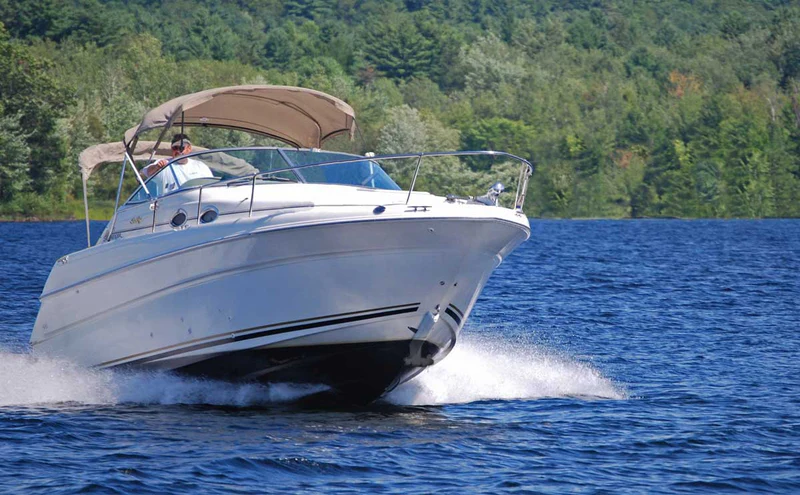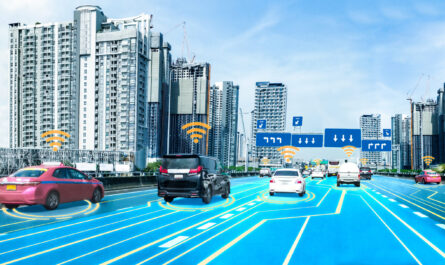What are Bow And Stern Thrusters?
Bow thrusters and stern thrusters are maneuvering devices installed on ships and boats to provide thrust for steering both forward and backwards. They are used to improve maneuverability in tight spaces where traditional rudders alone may not provide enough control. Bow thrusters are mounted in the bow, or front of a vessel, and stern thrusters are mounted in the stern, or rear. Together they allow for more precise maneuvering in docks, harbors and other tight quarters.
How Do It Work?
Most bow and stern thrusters operate using azimuthal propellers which can be rotated to direct thrust in any desired direction, whether forward, backward, or to either side. Bow and Stern Thrusters propeller is housed within a tunnel or aperture in the ship’s hull. A high-powered electric motor drives the propeller. By changing the angle of the propeller blades, the direction of thrust can be altered without changing the ship’s heading. This allows the ship’s captain to nudge the bow or stern sideways with tremendous precision. The direction and amount of thrust is controlled from the ship’s bridge. Rudder movements and bow/stern thrust complement each other for the most controlled handling possible.
Advantages
Maneuverability and Precise Control
Bow and stern thrusters provide an unprecedented level of maneuvering finesse compared to relying solely on traditional rudders. They allow ships to turn almost in place, maximizing control even in tight harbors and docks. Small adjustments of thrust allow ships to edge perfectly alongside piers and berths.
Backwards Propulsion
With stern thrusters, ships are able not only move backwards but also steer while going astern. This is useful for undocking maneuvers and gives greater flexibility when navigating restricted waters or docking areas. Traditional rudders have little effectiveness at low speeds or when moving backwards.
Increased Safety
The ability to position ships more precisely helps avoid accidents in congested ports. Fine control over movements in tight spaces reduces risks of allisions with ships, piers or protective infrastructure. Crews have more confidence steering in tight conditions knowing thrust is available from multiple points on the vessel.
Applications
Cruise Ships and Mega Yachts
Large cruise ships and mega yachts have some of the most sophisticated bow and stern thruster setups due to their massive size and maneuvering demands. Precise handling assists in docking these giant floating cities in tight harbors around the world. Systems may include multiple bow and stern thrusters for redundancy.
Tugs and Offshore Support Vessels
Workboats like tugs and offshore supply vessels benefit greatly from the finesse afforded by bow and stern thrusters. Their roles like ship-assist, anchoring and berthing of larger vessels demand the utmost control in restricted waters. Thrusters maximize maneuverability for these critical tasks.
Icebreakers and Research Vessels
Ships dependent on close-quarters work in icy conditions or field work rely on bow and stern thrusters. Icebreakers use them for backing and ramming in frozen waters. Research vessels deploying equipment need excellent station-keeping ability provided by supplemental thrust points.
Ferry and Water Taxi Vessels
Passengers flocking to ferries and water taxis appreciate the swiftness and precision afforded by bow and stern thruster-equipped vessels. Quick turnarounds are possible in tight ferry slips and terminals.
Drawbacks of Bow And Stern Thrusters
Increased Complexity
Additional propulsion systems mean more mechanical and electrical components to maintain compared to simpler rudder-only setups. Breakdowns require specialized repair and downtime reduces availability. Proper maintenance is key to reliability.
Higher Capital Costs
Purchasing, installing and integrating bow and stern thruster packages on new vessels requires greater investment compared to omitting them. Operating costs may also be slightly higher due to increased energy use.
Space Requirements
Thruster tunnels, machinery and associated pipework/wiring consume useful stowage and equipment space within ship hulls and machinery spaces. Designers must account for these areas carefully.
In summary, while bow and stern thrusters introduce some disadvantages in complexity, costs and space usage, the advantages of enhanced maneuverability and safety they afford are substantial. They represent an essential technology maximizing control and precision in modern marine operations.



